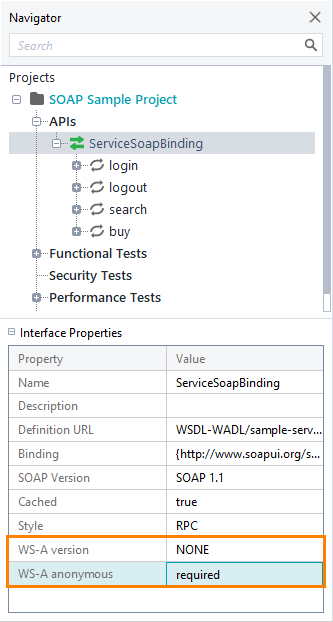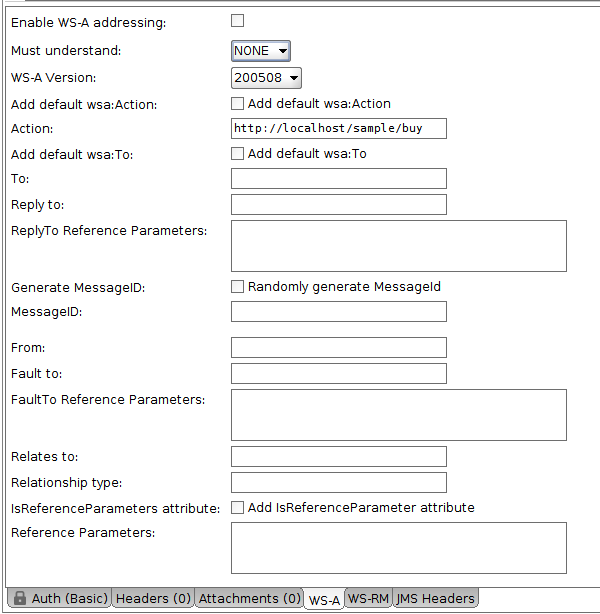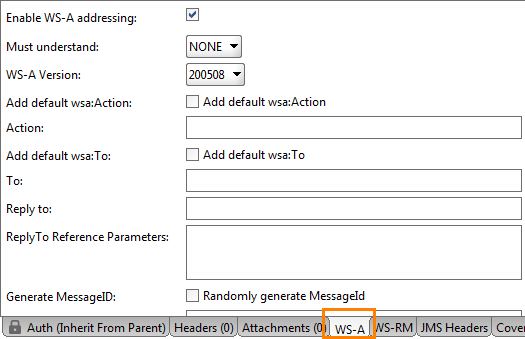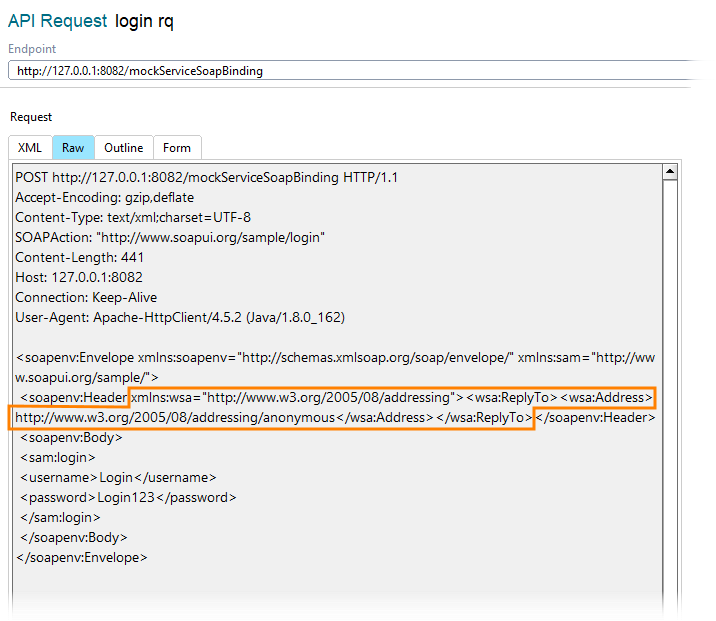About
WS-Addressing is a standard way of including message routing data in SOAP request headers. WS-Addressing is used to guarantee message delivery. When using it, you include the request destination in a SOAP header to always deliver your messages successfully. You can find more information on the w3.org website.
When importing a WSDL, ReadyAPI tries to extract information that relates to WS-Addressing, including the policies and the default wsa:Action values. If WS-Addressing is detected, it is automatically enabled for requests with the correct version and headers.
If ReadyAPI does not detect WS-A metadata correctly, or you want to enable it manually, use the WS-A Version property to specify the version to use:

Configuring WS-Addressing
To enable WS-Addressing, go to the request editor and open the WS-A panel. In the panel, select Enable WS-A addressing. ReadyAPI will automatically specify the parameters based on your request information. You can then configure other parameters.
| Note: | All the fields of the WS-Addressing panel support property expansions, so you can easily pull values from properties defined at a higher level in your project. |
| Option | Description |
|---|---|
| Enable WS-A |
If selected, WS-Addressing is enabled for the request. |
| Must understand |
If true, the server must be able to understand the header content to receive messages. Otherwise, the server does not need to understand the header. |
| WS-A Version |
The WS-A version used for the request. |
| Add default wsa:Action |
Commands ReadyAPI to use the default wsa:Action value. |
| Action |
Specifies a custom |
| Add default wsa:To |
Commands ReadyAPI to use the default wsa:To value. |
| To |
Specifies a custom |
| Reply To |
Specifies an endpoint for replies to the message. |
| ReplyTo Reference Parameters |
The parameters associated with the endpoint that will be added to the ReplyTo value. |
| Generate MessageID |
Generates a random |
| MessageID |
A custom |
| From |
The client the message is sent from. Provides a value for the |
| Fault To |
The intended receiver of error messages. Provides a value for the |
| Fault To Reference Parameters |
The parameters associated with the endpoint that will be added to the |
| Relates To |
The message to which this message relates. |
| Relationship type |
The type of WS-A Relationships between messages. |
| isReferenceParameter attribute |
If selected, the request is expected to have reference parameters in its body. |
| Reference Parameters |
The reference parameters to add to the request if the isReferenceParameter option is selected. |
Using WS-Addressing
Below is an example of configured WS-Addressing. The example uses the default wsa:Action, wsa:To and wsa:MessageId headers.
When you send a request, the following information is displayed in the the raw request view.



